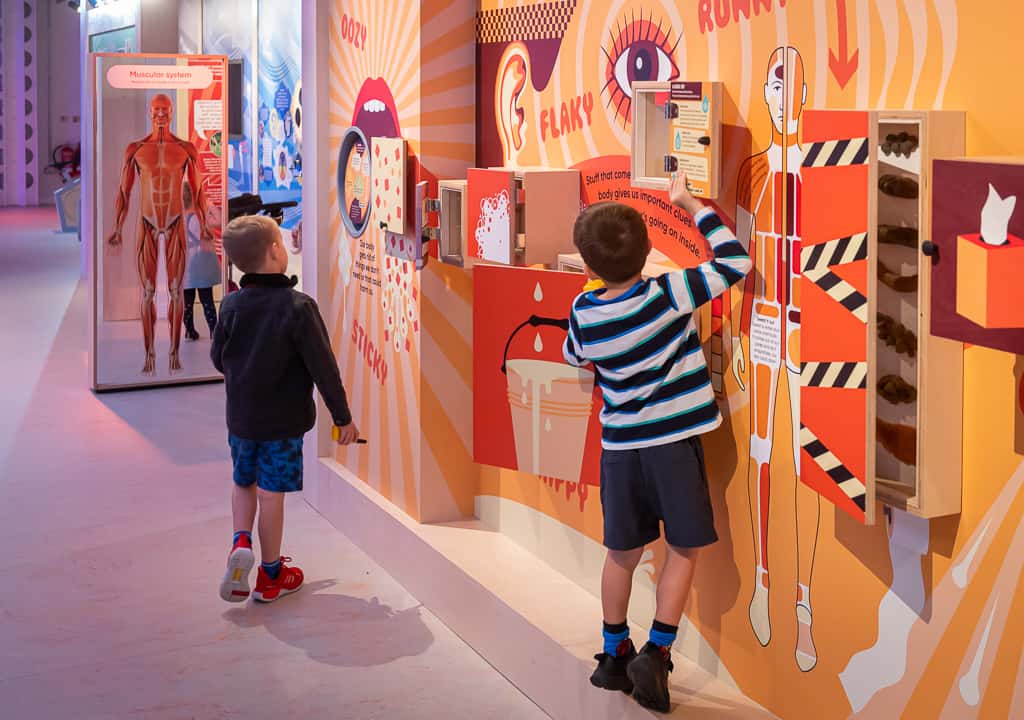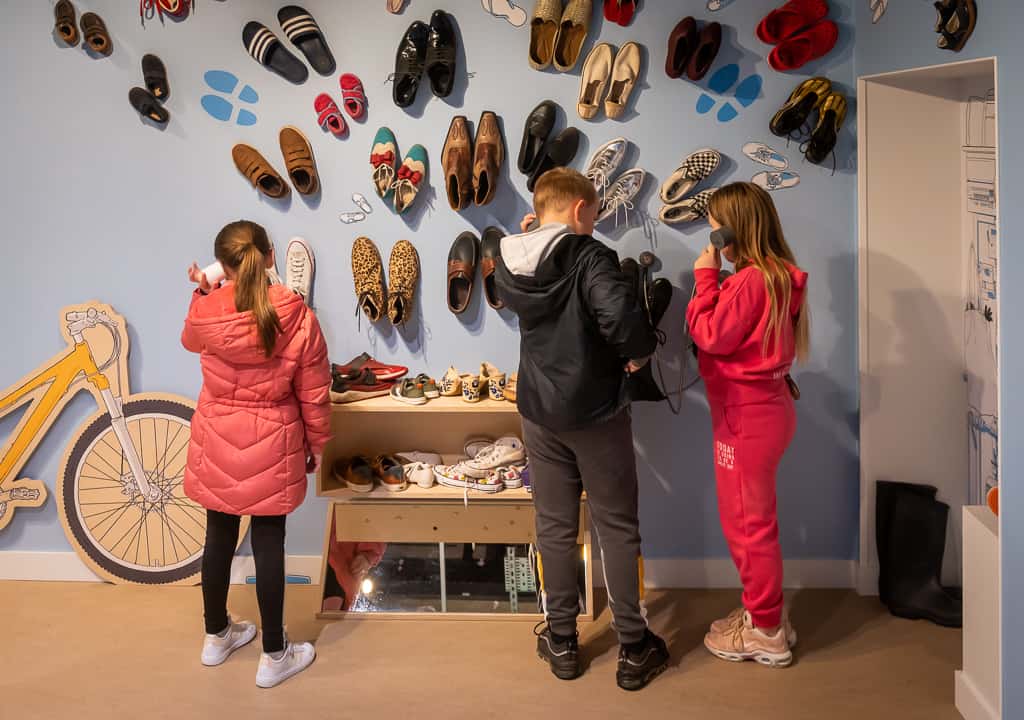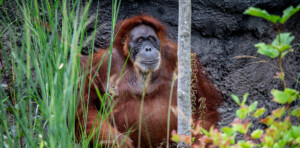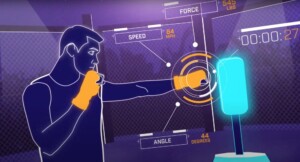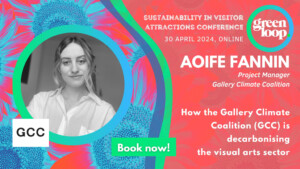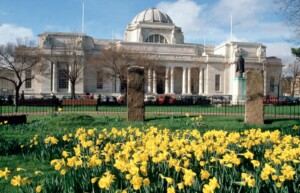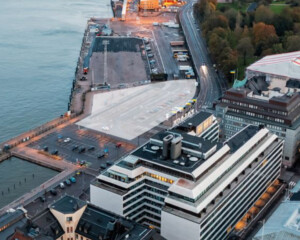Eureka! Science + Discovery opened to visitors on 11 November 2022. The new children’s science museum, where young people can learn all about science, technology, engineering, arts and mathematics (STEAM) through interactive activities and unique exhibits, cost £11.4 million and has been in the making since 2014.
Highlights include a 12-foot-tall cat with a swishing tail and a giant climbing tree, as well as areas exploring the human body, low-carbon technologies and the environmental impact of fast fashion. The Discovery Café, a ‘Make Create’ space, and an exhibition area for younger guests called ‘The Burrow’ will open after Christmas.
Located in Wallasey, Merseyside, one of the most deprived areas in the UK, Eureka! Science and Discovery is a sister to Eureka! The National Children’s Museum in Halifax. Expected to attract around 180,000 visitors every year and contribute £12m to the local economy by 2032, the attraction was created in collaboration with 120 children and young people.
The merits of children’s museums
Leigh-Anne Stradeski is the chief executive of Eureka! The National Children’s Museum. She tells blooloop:
“I started my career in Canada, back in the late nineties, when I joined Canada’s first children’s museum, which was called the London Regional Children’s Museum. I had come out of a career in PR and communications, working primarily in healthcare and education. This was a change for me, but as soon as I took the role – it was originally an interim role – I did a lot of research. I had young children at that time, and had visited the Children’s Museum, and seen the benefits to my own kids.”
Having the chance to dig deep into the sector and the principles underpinning it, visiting a lot of children’s museums, primarily, at that time in the US and Canada, meant Stradeski developed a thorough understanding of the merits of play-based learning, and the huge impact it could have.
“I was drawn in, and the rest is history. I decided this was really where I wanted to be. This was my niche.”
The beginnings of Eureka!
At this point, the opportunity to move to the UK came up:
“Eureka! had been open for a few years at that time, but was really in need of a future plan and development,” she comments:
“I came to Halifax as the chief executive of Eureka!, initially thinking it would be for maybe four or five years, and then I would go back to Canada, but it has just been so exciting: one challenge after another, and then the big dream – of extending our reach beyond Halifax to another Eureka!, which has finally happened.”
Eureka!, which has just celebrated its 30th anniversary, opened in 1992, after several years of planning and fundraising. Stradeski explains:
“It was initially founded by Dame Vivien Duffield of the Clore Foundation. She had had the opportunity to visit children’s museums in America with her own children and felt we really needed one in England, so she set out to bring that concept over here.”
30 years in Halifax
At this point, Dame Vivian was connected with the then Prince Charles, who was involved with a business concerned with urban regeneration in towns in the North:
“He had a connection with Halifax,” Stradeski explains. “Which is why Eureka! ended up being there, on the old railway yard, which he thought would be an excellent place for this children’s museum. It was fantastic because Dame Vivian had initially thought London would be the place for the UK’s first children’s museum.”
“However, there’s so much in London, whereas the north of England, certainly at that time, had very little that was really inspirational and aspirational, particularly for young children. It brought something to the north of England, and we’ve really established ourselves here over the past 30 years, and gone from strength to strength.”
Location, location, location
The new attraction in Merseyside was created in collaboration with 120 children and young people. It is hoped that it will contribute £12m to the local economy by 2032.
“There are actually a lot of similarities in terms of the initiative and the type of community,” Stradeski says. “It is a very deprived community, but also one that is undergoing massive regeneration. We are in the very early stages of that transformation, and will serve as a cultural anchor for the continued regeneration of that area.”
This was something the team found exciting:
“It’s not just about being Eureka! in Wallasey; it’s about being part of an overall transformation and regeneration. There’s so much in Liverpool, but in East Wirral, there has been nothing like this for children and families. That was a big appeal for us.”
Hands-on play and learning at Eureka!
Eureka! is at an advantage, compared with the rest of the museum sector, when it comes to reaching a broad audience.
“This is where Eureka! comes into its own. We are not positioned as a traditional museum. We are very much a hands-on, play-based interactive experience that engages children.”
While children’s museums had their roots in traditional museums, they transitioned swiftly away from being collections-based:
“Rather than being a ‘don’t touch, be quiet, hands off’ type of attraction, they are immersive, interactive, hands-on, multisensory, – get in there, dive in, you can touch everything. You can make lots of noise; you can even run around. That is how we built our brand.”
This not only appeals to a much wider audience because they don’t view it as a traditional museum, but it also introduces children and families that wouldn’t go to a traditional museum to the benefits of a cultural organization, and can actually establish a museum-going, gallery-going practice.”
Of course, in the three decades since Eureka! opened, museums and galleries have introduced elements of interactivity and immersion in an effort to make themselves more accessible to children and families, and to build that sector of the audience.
Engaging with children and young people
In Halifax, the target audience is children from birth to 11:
“The Early Years side is our focus, because, at our very core, we believe in the importance of engaging with children at the earliest possible stage. That’s when they’re at their most curious. They want to know everything; their neurons are firing and building and growing at sonic speed.
“We love to engage with children in that age range, but also with children up to 11, because our experience is layered. If children come as babies to Eureka!, we have things that they love in terms of immersive, multisensory play.”
“Then, each year as they grow, there are new things for them, because the experience develops, from our Sound Garden with its leaf cradle and butterfly-making activities, up to the Spark Gallery, which is our digital art experience for older children. It involves elements of gaming and technology.”
When Merseyside’s Eureka! Science and Discovery opened, that envelope was extended to encompass an age range from birth to 14:
“Birth to 11 takes children to the end of primary education, but after that, there is that very important transition stage where children are moving into being a young person rather than a child. It’s a great time of exploring your own identity, and learning what you’re about.”
Input from the audience
Stradeski and her team worked with older children to work establish which elements are relevant and topical:
“We geared our content to their input,” she says. “We have also upped the ante in terms of the edginess of the exhibits, to make them less childlike.”
Importantly, however, the younger end of the age range is still catered for:
“In the New Year, we will be opening an extension of the experience at Science and Discovery called The Burrow, which will be an exhibition space specifically for children under seven. We’re going to be true to our roots, and have something for that age range, which they will then grow through, and the main attraction will go up to 14. We’re covering a wider audience on that side of the water.”
Key themes at Eureka!
Eureka! Science and Discovery opened on 11 November:
“It’s basically an attraction that’s based around three key themes: ‘Bodies’, ‘Homes’, and ‘Nature’. Those themes are all very relevant to helping children understand themselves, and the world around them. Sustainability was central to what we want to cover in the new visitor attraction, so we have threaded the concept of sustainability through each of those themes, demonstrating the interconnections.”
In each zone, the systems underlying the themes are explored. She explains:
“In ‘Bodies’, we’re looking at areas such as, who am I? What is my body all about? It goes through the systems of the body. There’s a section on the brain, and how it works to control the senses. There’s a section on the key elements of being fit and healthy, such as nutrition, rest, and exercise.”
Eureka! partnered with Liverpool John Moores University and Alder Hey Hospital to develop the element on nutrition and physical activity:
“We have an area called the innovation in ‘Bodies’, which is about the fantastic technology that exists now to help map your body and understand how certain areas can be addressed if you have issues. It also explores prosthetics and robotics, and the differences between humans and robots, and their respective capabilities. There are activities where you can pit yourself against a robot.”
Interactives and more
The ‘Homes’ area covers the materials that homes are made of, and the systems in a home, and features a giant kettle, toaster, and interactive water-based games. She adds:
“We have recreated the areas that you would find in your own home, so there’s a kitchen area, a lounge, a bedroom, and a bathroom. There are activities in all of those that connect to the sustainability theme.
“In the bathroom, this is about how we use water. There’s a shower activity called Soapy Karaoke. A four-minute shower is optimal in terms of water use, so we have several tunes that last four minutes, and you try to get through your shower before the tune ends. Then there’s another activity, Bathroom DJ, where you can lay down some beats. It’s all fun.”
One of the highlights of the attraction is a giant cat. At 12 feet tall and weighing in at 750 kilos, the cat, which has a twitching tail, is the centrepiece of Eureka’s Home Zone, offering the purr-fect Instagram selfie moment, and an opportunity to learn about the feline species:
“We’re always trying to demonstrate the differences between species,” Stradeski says. “It covers how cats communicate, and how fast they are. There’s a game where you have to react faster than a kitten: can you go as fast? Of course, not many of us can. Cats are very fast. They have lightning reflexes and incredible eyesight.”
Exploring sustainability at Eureka!
The ‘Nature’ area helps children understand how they can be inspired by nature, and how nature can be harnessed:
“One of my favourite bits is around renewable energy sources. There are interactive activities around solar, tide, and wind energy. We’ve worked with partners on all of those.”
“One of our founding partners was Ørsted; they have worked with us on the tidal energy aspect. There’s a really great – and popular – activity where children can role-play being a turbine technician, identifying and correcting the faults in the wind turbines.”
Another highlight is the 30-foot-tall climbing tree, built by CAP.Co, the adventure play specialist.
“This is a dream come true for me,” Stradeski says. “I’ve always wanted to have a really big climbing frame. We never achieved it in Halifax, but we have it at Eureka Science and Discovery. It’s beautiful. Children can climb up quite high in the tree, and work their way down.”
A STEAM approach
She adds:
“One thing that is really impressive about Eureka Science and Discovery is that everywhere you go, you’re surrounded by beauty. We’re touching on all of the STEAM subjects: science, technology, engineering, arts, and maths. The interactives all reflect the ‘A’ in STEAM: an artistic and very sculptural approach to exhibition design, which is quite stunning.”
“Over the past few years and through COVID, it has become so apparent that engaging in cultural and artistic activities is critical for mental health and wellbeing. We wanted to incorporate that in our ‘Nature’ zone.”
The Nature Den encapsulates this:
“It’s like a surround sound theatre space, very quiet, with images – under the sea, skylines, wildlife, and the changing seasons – playing on the walls. You can sit in there on giant bean bags, relax, and watch nature surround you. The exhibits resonate with the environment in the Liverpool city region and Northwest: the species, the animals, the water, and the cityscapes, are all local.
“It really is of the place, and not a generic experience. People see things they recognize from the Wirral and the surrounding area. That was important to us, as well.”
Connecting with schools
The museum’s content also makes connections with the curriculum. She explains:
“We won’t be offering our school group programmes until into next year, because we’re doing a phased approach to opening, and our education team is just going to start getting established early in 2023. We’ll establish ourselves with the public, and then, in spring, we’ll launch our range of school programmes. As with the location in Halifax, we work very closely with teachers and schools in the area to make sure that we’re delivering programmes that resonate with them.”
“The co-creation process that we used to create Eureka! Science and Discovery involved working with local primary and secondary school children and their teachers in terms of the content, so we’ve got a really solid base to build on.”
A space dedicated to innovation and imagination, Make Create, will be launched next year:
“We will be delivering workshops and school group programmes in that space,” Stradeski says:
“It will be very interactive, very hands-on. It’s where all of the learning and experience comes together, and the children work on a focused project to create something new and innovative, using all that they’ve learned.”
Future plans for Eureka!
In terms of an expansion strategy, Stradeski confirms that there will be further Eureka! locations in the future.
“Hopefully, we won’t wait another 30 years for the next,” she comments. “It has been an ambition of Eureka! and our Board of Directors to do this kind of extension so that more children and young people throughout the UK can have the Eureka! experience. We’ve got a 30-year track record, and have seen the benefits that it can bring young people.”
However:
“To make it happen, it really does require that all the planets are aligned.”
Funding is key
In the case of Eureka! Science and Discovery, those aligned stars consisted of a combined authority that had a progressive regional growth strategy, and a can-do attitude:
“They were ready to commit to supporting us from a financial perspective, but by being collaborative and working very closely with us. I have to say, the support we’ve experienced from both Liverpool Combined Authority and also the local authority in Wirral has just been outstanding. We couldn’t have done it without that, especially through this rather rocky period of COVID where we’ve been in development.”
The funding was another puzzle piece that fell into place. She adds:
“Should all those things come together again, we will be looking strategically at where the next ideal location would be for us, and we’ll move in that direction.”
For the moment, the focus is on getting Eureka! Science and Discovery established and successful.
“Then we’ll move on. Our Board is very keen on growth, and we’ve proved that we can do it now.”







